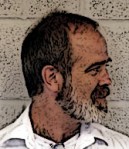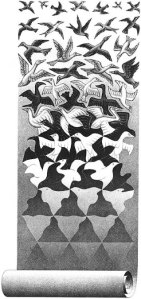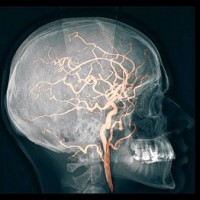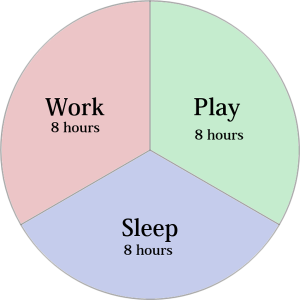 In his book, Incomplete Nature – How Mind Emerged from Matter, Terrence Deacon tackles some of the deepest and gnarliest philosophical questions about life and mind, and how they emerge from the physical world despite the fact that the laws of physics can only explain lifeless, mechanical processes. Regarding the second law of thermodynamics, which states that everything is in an eternal state of eventual decay, Deacon says this:
In his book, Incomplete Nature – How Mind Emerged from Matter, Terrence Deacon tackles some of the deepest and gnarliest philosophical questions about life and mind, and how they emerge from the physical world despite the fact that the laws of physics can only explain lifeless, mechanical processes. Regarding the second law of thermodynamics, which states that everything is in an eternal state of eventual decay, Deacon says this:
 “There is the dead, pointless, uncaring world and its rules, and the living, striving, feeling world and its rules, and the two seem to be working in quite contradictory ways. Because the spontaneous order generation that is so characteristic of life and mind runs counter to this otherwise exceptionless current of nature, it demands that we take seriously the possibility that our usual forms of explanation might be inadequate. When unrealized future possibilities appear to be the organizers of antecedent processes that tend to bring them into existence, it forces us to look more deeply into the ways we conceive of causality and worry that we might be missing something important.”
“There is the dead, pointless, uncaring world and its rules, and the living, striving, feeling world and its rules, and the two seem to be working in quite contradictory ways. Because the spontaneous order generation that is so characteristic of life and mind runs counter to this otherwise exceptionless current of nature, it demands that we take seriously the possibility that our usual forms of explanation might be inadequate. When unrealized future possibilities appear to be the organizers of antecedent processes that tend to bring them into existence, it forces us to look more deeply into the ways we conceive of causality and worry that we might be missing something important.”
I am in the process of re-reading the book, which is fat and dense.

Deacon makes little attempt to help the reader by phrasing his sentences and paragraphs for easy digestion. Subsections are rare, and I feel like I’m often wading in a vast ocean without a view of an outcropping to pause and catch my breath. I beg for a period, perchance a comma. But despite the relentless texture of the writing, what Deacon has to say is inspiring…almost breathtaking. Actually, the breath-taking happens after I allow Deacon’s ideas to percolate in my mind during a short walk – which I find necessary for getting the depleted oxygen back into my brain.
…which reminds me of a core concept of the book. Billions of years of evolution have gone into the making of this unlikely spacetime dynamical event, which is me: a fully conscious human who happens to be writing words for you to read at some point in the future. The fact that I can choose to go for a walk for mental and physical health, and maintain my equilibrium (on many levels of consciousness, mostly un), is nothing short of a miracle. This is especially true when you consider the general trajectory of atoms in the universe.
 But in fact it is not a miracle. It can be explained with a systems-attitude overlaid on top of physics that includes emergence. “Emergence” is so wonderfully explained by Daniel Dennett in his descriptions of skyhooks and cranes. Here’s my take on the topic: when a higher level of structure emerges in the world, it reaches down to manipulate the lower levels that brought it into existence – it regulates and modulates those lower levels for its own survival. Then another level of emergence comes into being, and begins to regulate and modulate the previous structures. This upward cascading of order – this ever-complexifying hierarchy of constraints – is particular to life and mind, and it runs counter to the entropy that is the general rule of the universe. This is sometimes referred to as negentropy.
But in fact it is not a miracle. It can be explained with a systems-attitude overlaid on top of physics that includes emergence. “Emergence” is so wonderfully explained by Daniel Dennett in his descriptions of skyhooks and cranes. Here’s my take on the topic: when a higher level of structure emerges in the world, it reaches down to manipulate the lower levels that brought it into existence – it regulates and modulates those lower levels for its own survival. Then another level of emergence comes into being, and begins to regulate and modulate the previous structures. This upward cascading of order – this ever-complexifying hierarchy of constraints – is particular to life and mind, and it runs counter to the entropy that is the general rule of the universe. This is sometimes referred to as negentropy.
 I had previously struggled to understand the “incompleteness” aspect of Deacon’s thesis. In the first part of the book, he spends a lot of time re-stating the notion of things that “aren’t there” or that exist “for the sake of something missing”, after only briefly defining this concept up-front. In my first reading I had started out with a limp. Perhaps some training wheels with familiar language would have helped, as these are new and subtle ideas.
I had previously struggled to understand the “incompleteness” aspect of Deacon’s thesis. In the first part of the book, he spends a lot of time re-stating the notion of things that “aren’t there” or that exist “for the sake of something missing”, after only briefly defining this concept up-front. In my first reading I had started out with a limp. Perhaps some training wheels with familiar language would have helped, as these are new and subtle ideas.
This is not unlike a small criticism from Daniel Dennett, in a book review. Overall though, Dennett’s review is very positive. In fact, Dennett says the book has him re-examining his fundamental working assumptions. When something rocks Daniel Dennett’s world, you stop and take notice.
The Future Does Change the Present
 Living things have inner representations of the world they find themselves in – that’s part of the holographic picture of life. For us humans, these representations are not just in our brains; they are infused in our technology – distributed throughout our extended phenotypes. Organisms with minds not only put a lot of effort in trying to predict the future (which is necessary for survival), but they act in accordance to those predictions.
Living things have inner representations of the world they find themselves in – that’s part of the holographic picture of life. For us humans, these representations are not just in our brains; they are infused in our technology – distributed throughout our extended phenotypes. Organisms with minds not only put a lot of effort in trying to predict the future (which is necessary for survival), but they act in accordance to those predictions.
This has the effect of creating alternate futures – of changing the course of events – based on something represented in the mind of the organism – represented but not actually “there” (though it could be there in the future). I believe this is what Deacon means by incompleteness, things that are missing, or, in his own words: “absential features“.
 According to Raymond Tallis in a Wall Street Journal book review, An absential is a phenomenon “whose existence is determined with respect to an . . . absence.” This sounds somewhat opaque but captures something essential to mind. In the push-pull universe of mechanical causation, only that which is present shapes the course of events. In our lives, by contrast, we are always taking account of things that are no longer present or not yet present or that may never come to pass. Thus “absentials” include our beliefs, the norms to which we subscribe and those great silos of possibility such as “tomorrow” and “next year.”
According to Raymond Tallis in a Wall Street Journal book review, An absential is a phenomenon “whose existence is determined with respect to an . . . absence.” This sounds somewhat opaque but captures something essential to mind. In the push-pull universe of mechanical causation, only that which is present shapes the course of events. In our lives, by contrast, we are always taking account of things that are no longer present or not yet present or that may never come to pass. Thus “absentials” include our beliefs, the norms to which we subscribe and those great silos of possibility such as “tomorrow” and “next year.”
 Alan Kay is once said, “The best way to predict the future is to invent it“. This is not just good advice for entrepreneurs; it might also be the motto for all living things. How else can we explain the fact that life on Earth has continued to exist for billions of years, with robust self-similar structures that persist for several millions of years – gradually changing, only to become better at predicting the future.
Alan Kay is once said, “The best way to predict the future is to invent it“. This is not just good advice for entrepreneurs; it might also be the motto for all living things. How else can we explain the fact that life on Earth has continued to exist for billions of years, with robust self-similar structures that persist for several millions of years – gradually changing, only to become better at predicting the future.
Why do we not expect every living thing to quickly dissolve into a gas, or at least some entropic state of uselessness? This is what classical physics would predict for such a rare, unlikely, and delicate assemblage of molecules. The answer is that living things have their futures infused into their DNA, their minds, and their societies. We fight the force of entropy, and we succeed.
For the most part.
Physics does not (at least not yet) adequately explain how the future effects the present. For this reason, Deacon is helping to build the foundations for a new kind of physics (or perhaps a new kind of meta-physics), which includes…
you, me, our consciousness, and everything that has meaning.



